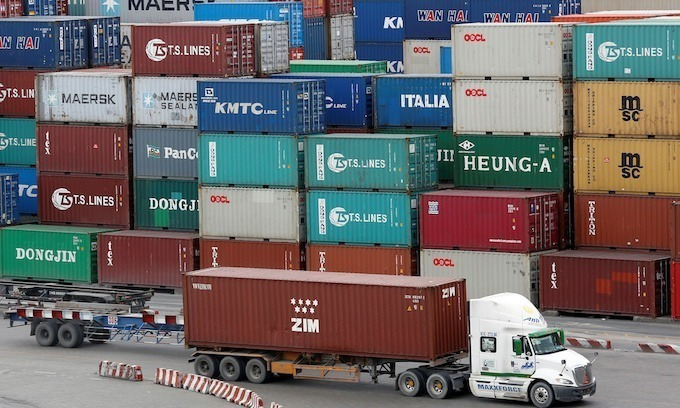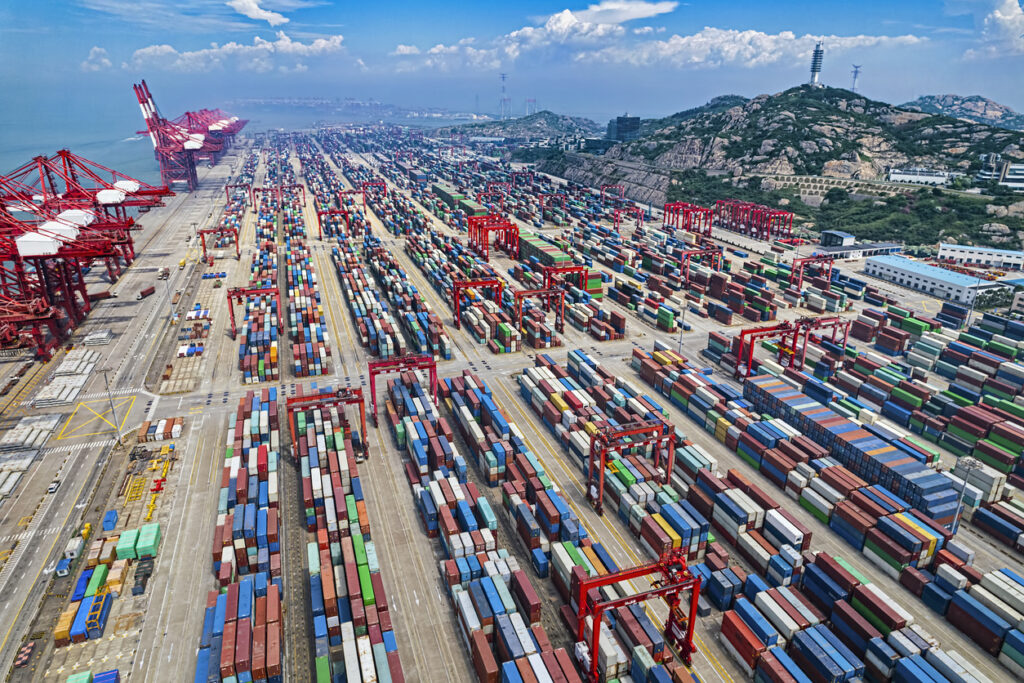Freight Forwarder Houston
Supply chain management is the process of planning, coordinating, and controlling the flow of goods and services from the point of origin to the point of consumption. It involves various activities such as sourcing, procurement, production, transportation, warehousing, distribution, and customer service.
A freight forwarder is a company that acts as an intermediary between the shipper and the carrier, providing various services such as booking cargo space, preparing documents, arranging customs clearance, consolidating shipments, tracking cargo, and handling insurance claims.
A freight forwarder can play a vital role in optimizing supply chain management by offering the following benefits:
Benefits of Working with a Freight Forwarder

- Cost savings: A freight forwarder can help you reduce your transportation costs by negotiating better rates with carriers, consolidating shipments, choosing the most efficient routes and modes of transport, and avoiding delays and penalties.
- Time savings: A freight forwarder can help you save time by handling all the paperwork and documentation required for international trade, such as invoices, packing lists, bills of lading, certificates of origin, and customs declarations. They can also expedite the clearance process and resolve any issues that may arise during transit.
- Risk management: A freight forwarder can help you manage the risks associated with global trade, such as currency fluctuations, political instability, natural disasters, theft, damage, and loss. They can also provide you with insurance coverage and claims assistance in case of any mishaps.
- Expertise: A freight forwarder can provide you with expert advice and guidance on various aspects of international trade, such as regulations, tariffs, duties, taxes, licenses, permits, and standards. They can also help you comply with the requirements of different countries and regions.
- Flexibility: A freight forwarder can offer you flexibility and customization by tailoring their services to your specific needs and preferences. They can also adapt to changing market conditions and customer demands by providing you with alternative solutions and options.
Key Considerations When Choosing a Freight Forwarder Houston from China

Not all freight forwarders are created equal. To choose the best freight forwarder for your business, you should consider the following factors:
- Experience: You should look for a freight forwarder that has extensive experience in handling shipments similar to yours in terms of size, volume, type, destination, and frequency. You should also check their track record and reputation in the industry.
- Network: You should look for a freight forwarder that has a strong network of agents and partners in your target markets and regions. This will ensure that they have local knowledge and connections to facilitate the smooth movement of your cargo.
- Services: You should look for a freight forwarder that offers a wide range of services that match your needs and expectations. These may include air freight, ocean freight, road freight, rail freight, multimodal transport, warehousing, distribution, customs brokerage, cargo insurance, project cargo, etc.
- Technology: You should look for a freight forwarder that uses advanced technology to enhance their efficiency and effectiveness. This may include online booking and tracking systems, electronic data interchange (EDI), cloud-based platforms, artificial intelligence (AI), blockchain, etc.
- Communication: You should look for a freight forwarder that communicates clearly and promptly with you throughout the entire process. They should provide you with regular updates and feedback on the status of your shipment and alert you of any issues or changes that may affect your delivery.
Technology and Innovation in Freight Forwarding

Technology and innovation are driving the transformation of the freight forwarding industry. Some of the emerging trends and developments that are shaping the future of freight forwarding are:
Freight Forwarder Houston
- Digitalization: Digitalization is the process of using digital technologies to improve the efficiency and effectiveness of business processes and operations. In freight forwarding, digitalization can help streamline and automate various tasks and functions, such as booking, tracking, invoicing, documentation, and communication. It can also enhance transparency and visibility across the supply chain, enabling better decision making and optimization.
- Big data and analytics: Big data and analytics are the methods and tools used to collect, process, analyze, and interpret large and complex sets of data. In freight forwarding, big data and analytics can help generate valuable insights and intelligence from various sources of information, such as cargo movements, market trends, customer behavior, weather patterns, etc. It can also help improve forecasting, planning, pricing, risk management, and customer service.
- Artificial intelligence and machine learning: Artificial intelligence (AI) and machine learning (ML) are the branches of computer science that deal with creating systems and algorithms that can perform tasks that normally require human intelligence and learning. In freight forwarding, AI and ML can help automate and optimize various processes and functions, such as routing, scheduling, loading, unloading, etc. It can also help enhance customer experience and satisfaction by providing personalized recommendations, solutions, and support.
- Blockchain: Blockchain is a distributed ledger technology that records transactions in a secure, transparent, and immutable way. In freight forwarding, blockchain can help improve trust and collaboration among different parties involved in the supply chain, such as shippers, carriers, freight forwarders, customs agents, and regulators. It can also help reduce costs and errors by eliminating intermediaries and paperwork.
Case Studies: Successful Supply Chain Optimization Freight Forwarder Houston from China

To illustrate how a freight forwarder can help optimize supply chain management, here are some examples of real-life case studies that showcase the benefits and outcomes of working with a freight forwarder.
- Case Study 1: A global manufacturer of medical devices needed to ship its products from China to Brazil amid the COVID-19 pandemic. The company faced various challenges such as limited air cargo capacity, high freight rates, complex customs regulations, and strict quality standards. The company partnered with DHL Global Forwarding to find a solution that would ensure timely and safe delivery of its products. DHL provided the company with a comprehensive service package that included air charter flights, customs clearance, quality inspection, and temperature-controlled storage. As a result, the company was able to deliver its products to Brazil within 48 hours, saving time and money while maintaining quality and compliance.
- Case Study 2: A leading manufacturer of wind turbines needed to transport its components from Germany to Chile for a renewable energy project. The company faced various challenges such as oversized cargo dimensions, remote destination location, harsh weather conditions, and tight delivery schedule. The company partnered with Kuehne+Nagel to find a solution that would ensure smooth and efficient transportation of its components. Kuehne+Nagel provided the company with a customized service package that included ocean freight, road transport, rail transport, and project logistics. As a result, the company was able to transport its components from Germany to Chile within 45 days, meeting the project deadline while minimizing costs and risks.
- Case Study 3: A multinational retailer of consumer electronics needed to optimize its inventory management across its global network of stores. The company faced various challenges such as high inventory costs, low inventory visibility, poor demand forecasting, and frequent stock-outs. The company partnered with Expeditors International to find a solution that would improve its inventory management. Expeditors provided the company with a cloud-based platform that integrated its supply chain data from various sources, such as suppliers, carriers, freight forwarders, warehouses, and stores. As a result, the company was able to gain real-time visibility into its inventory levels and movements across its network, enabling better demand planning and replenishment while reducing inventory costs and waste.
Steps to Implement Effective Supply Chain Management with a Freight Forwarder

To implement effective supply chain management with a freight forwarder, you should follow these steps:
- Step 1: Define your supply chain objectives and requirements. You should identify your goals and expectations for your supply chain performance, such as cost reduction, time optimization, quality improvement, risk mitigation, customer satisfaction, etc. You should also specify your requirements for your freight forwarding services, such as mode of transport, frequency of shipment, delivery time frame, cargo type and size, etc.
- Step 2: Evaluate your current supply chain situation and identify gaps and opportunities. You should analyze your current supply chain processes and operations and measure their performance against your
- objectives and requirements. You should also identify the gaps and opportunities for improvement and innovation in your supply chain.
- Step 3: Select a freight forwarder that meets your needs and expectations. You should compare and contrast different freight forwarders based on their experience, network, services, technology, communication, and reputation. You should also check their credentials and references to verify their reliability and quality.
- Step 4: Establish a partnership with your freight forwarder and communicate your supply chain objectives and requirements. You should develop a mutual understanding and trust with your freight forwarder and share your supply chain vision and strategy. You should also communicate your specific needs and expectations for each shipment and provide them with the necessary information and documents.
- Step 5: Monitor and evaluate your supply chain performance and feedback from your freight forwarder. You should track and measure your supply chain performance against your objectives and requirements using key performance indicators (KPIs) such as cost, time, quality, risk, and customer satisfaction. You should also solicit and provide feedback from and to your freight forwarder on a regular basis to identify any issues or challenges and resolve them promptly.
- Step 6: Continuously improve and innovate your supply chain management with your freight forwarder. You should review and update your supply chain objectives and requirements as per the changing market conditions and customer demands. You should also explore new opportunities and solutions with your freight forwarder to enhance your supply chain efficiency and effectiveness.
Common Challenges and Solutions in Freight Forwarding and Supply Chain Management

- Freight forwarding and supply chain management are complex and dynamic processes that involve various challenges and risks. Some of the common challenges and solutions in freight forwarding and supply chain management are:
- Challenge 1: Delays in transit due to congestion, weather, accidents, strikes, etc.
- Solution 1: Plan ahead and book cargo space in advance to secure capacity and avoid peak seasons. Use multimodal transport to reduce dependence on a single mode of transport. Track cargo movements in real-time using online systems or GPS devices to anticipate
- and mitigate any potential delays. Have contingency plans and backup options in case of emergencies.
- Challenge 2: Damages or losses of cargo due to mishandling, theft, accidents, etc.
- Solution 2: Pack and label cargo properly and securely to prevent damages or losses. Use appropriate packaging materials and methods according to the cargo type and size. Insure cargo against any risks and claims. Use reliable and reputable carriers and freight forwarders to handle cargo. Track and monitor cargo condition and location using sensors and devices.
- Challenge 3: Compliance issues due to different regulations, standards, and requirements of different countries and regions.
- Solution 3: Research and understand the regulations, standards, and requirements of the origin, destination, and transit countries and regions. Obtain the necessary licenses, permits, certificates, and documents for each shipment. Use a professional customs broker or a freight forwarder to assist with the customs clearance process. Pay the applicable duties, taxes, and fees for each shipment. Avoid prohibited or restricted items or substances.
- Challenge 4: Customer dissatisfaction due to poor quality, late delivery, wrong delivery, or missing delivery of cargo.
- Solution 4: Ensure quality control and inspection of cargo before shipment. Confirm the delivery details and instructions with the customer and the carrier. Provide accurate and timely information and updates to the customer on the status of their shipment. Resolve any issues or complaints promptly and professionally. Provide after-sales service and support to the customer.




